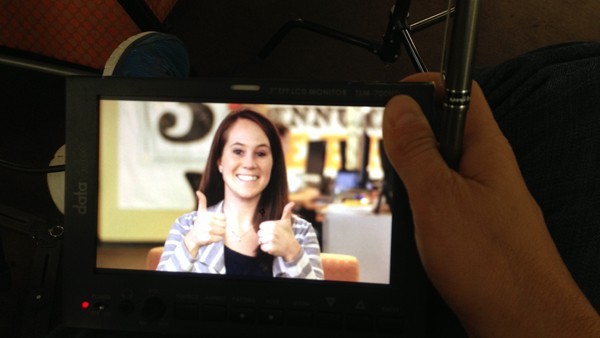Call it “brand storytelling.” Call it “speaking with an authentic brand voice.” Hey, you can call it whatever you want, as long as you respect the fact that when someone out there decides to give your content their attention, you owe them something in return: a good story, well-told.
What the audience really wants is to connect with something. An idea. A character. A journey. Our responsibility as storytellers is to give them some of these things, to engage them.
SUGGESTED READ: TELLING STORIES W/ VIDEO
So, how do you do it? What can you do to make sure your brand is saying the right things to the right people? Here are a few ideas to get you started…
1. Show, don’t tell.
This may be the most obvious-sounding suggestion, but it’s one that brands have a hard time with. They always want to tell you about the great thing they did, or the new shiny thing they just made. But you wouldn’t tell the audience that the hero just climbed the tower to save the princess, would you? “What the audience really wants is to connect with something.”No, you’d show it happening, and by showing it happening, the audience gets to experience it on a much deeper level. Treat your brand stories the same way, and you’ll move your viewers in more powerful ways.
2. Start at the end.
What’s the takeaway you want the audience to leave with? Do you want them to laugh or shed a tear? How do you want them to think differently about your brand? If you know where the journey ends, it makes it a lot easier to map a creative route to get there.
3. Great stories revolve around great characters.
They don’t always have to be characters in the traditional sense, but the best stories are always character-driven. From a brand perspective, your “character” might be a person, someone doing something extraordinary in the service of your brand and audience. You can also find “character” in your brand’s origin story, where it came from and how it began. And sometimes you can even find “character” in more unusual places, like in a booth at a diner, an old book on a library shelf, or in a classic Chevy convertible. Character is the bright hot center of the story universe, and everything else revolves around it.
4. Storytelling should be inclusive, not exclusive.
You should always have a well-defined audience. Knowing who you’re talking to is a key part of communication. But the best stories almost always invite a larger audience in. They revolve around challenges we can all relate to, characters we can identify with, and motivations we can all feel.
Which story process you embrace isn’t as important as simply using the one that fits your needs. Take a look at the lovingly-crafted slide deck linked below. Use it as a jumping-off point for your own process.
